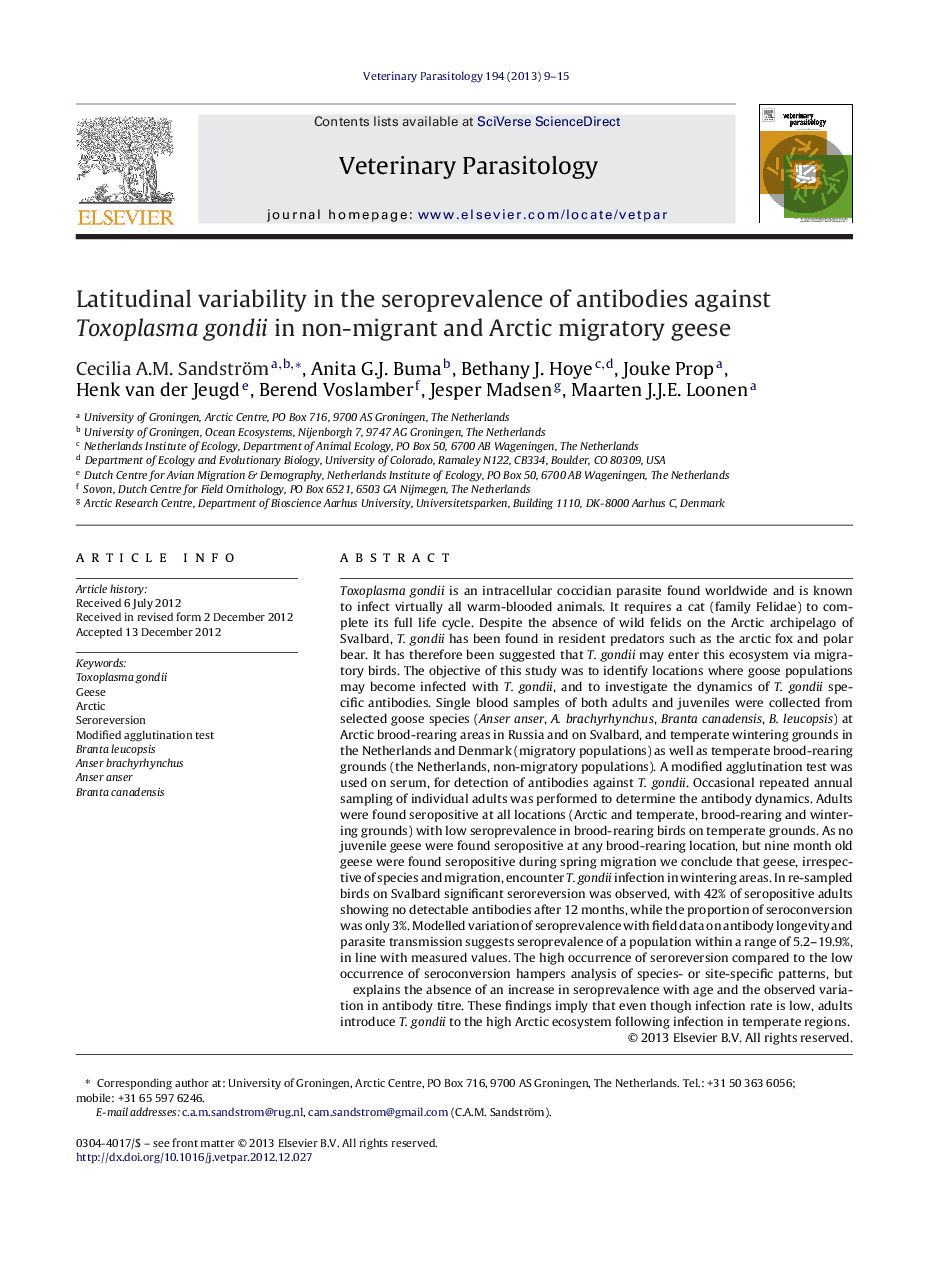| کد مقاله | کد نشریه | سال انتشار | مقاله انگلیسی | نسخه تمام متن |
|---|---|---|---|---|
| 5804065 | 1112453 | 2013 | 7 صفحه PDF | دانلود رایگان |
Toxoplasma gondii is an intracellular coccidian parasite found worldwide and is known to infect virtually all warm-blooded animals. It requires a cat (family Felidae) to complete its full life cycle. Despite the absence of wild felids on the Arctic archipelago of Svalbard, T. gondii has been found in resident predators such as the arctic fox and polar bear. It has therefore been suggested that T. gondii may enter this ecosystem via migratory birds. The objective of this study was to identify locations where goose populations may become infected with T. gondii, and to investigate the dynamics of T. gondii specific antibodies. Single blood samples of both adults and juveniles were collected from selected goose species (Anser anser, A. brachyrhynchus, Branta canadensis, B. leucopsis) at Arctic brood-rearing areas in Russia and on Svalbard, and temperate wintering grounds in the Netherlands and Denmark (migratory populations) as well as temperate brood-rearing grounds (the Netherlands, non-migratory populations). A modified agglutination test was used on serum, for detection of antibodies against T. gondii. Occasional repeated annual sampling of individual adults was performed to determine the antibody dynamics. Adults were found seropositive at all locations (Arctic and temperate, brood-rearing and wintering grounds) with low seroprevalence in brood-rearing birds on temperate grounds. As no juvenile geese were found seropositive at any brood-rearing location, but nine month old geese were found seropositive during spring migration we conclude that geese, irrespective of species and migration, encounter T. gondii infection in wintering areas. In re-sampled birds on Svalbard significant seroreversion was observed, with 42% of seropositive adults showing no detectable antibodies after 12 months, while the proportion of seroconversion was only 3%. Modelled variation of seroprevalence with field data on antibody longevity and parasite transmission suggests seroprevalence of a population within a range of 5.2-19.9%, in line with measured values. The high occurrence of seroreversion compared to the low occurrence of seroconversion hampers analysis of species- or site-specific patterns, but explains the absence of an increase in seroprevalence with age and the observed variation in antibody titre. These findings imply that even though infection rate is low, adults introduce T. gondii to the high Arctic ecosystem following infection in temperate regions.
Journal: Veterinary Parasitology - Volume 194, Issue 1, 1 May 2013, Pages 9-15
